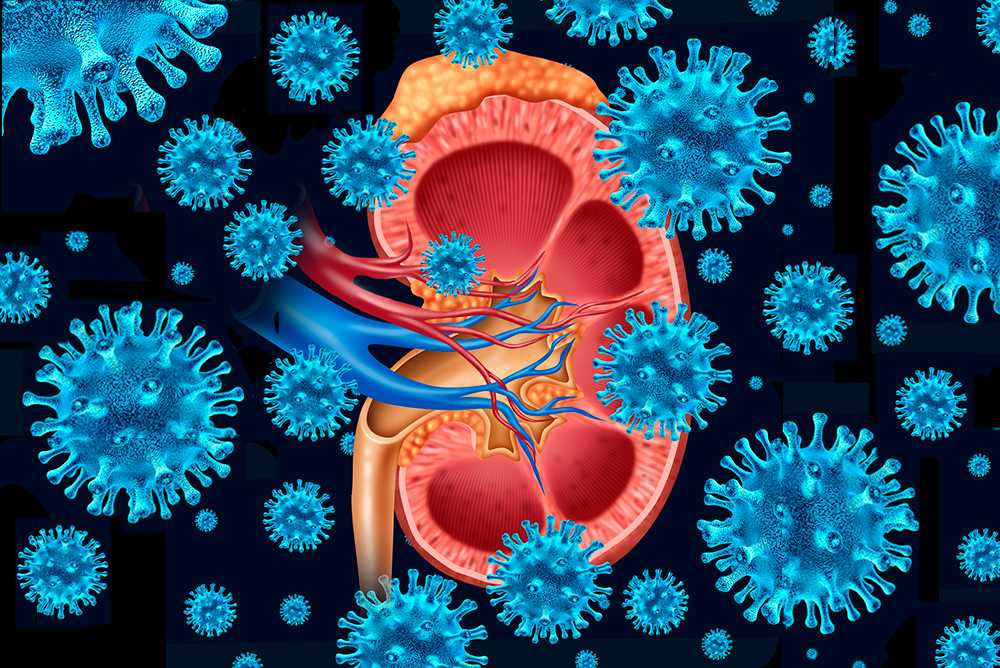
iStock
WOMEN WHO MAKE it past 40 without having a kidney stone are likely to be free of such potentially painful objects forever. In any case, women have less than one-half the risk compared to men. Most kidney stones occur between ages 20 and 40 and more commonly in warmer climates or with vigorous physical exercise — anything causing more fluid lost as sweat and less as urine.
On the other hand, the incidence of kidney stones has been rising slowly, more than doubling from 3.8% in the late 1970s to 8.8% in the late 2000s, according to the National Kidney Foundation. Now one in about every 10 people will have a kidney stone during their lifetime. The increase has occurred equally in women and men, with a lifetime risk of 9% for women and 19% for men — and may be related to the epidemic of obesity, along with high blood pressure and diabetes.
Dehydration is a major risk factor, making stone-causing elements like calcium more likely to clump into stones. Darker-colored urine is the best indicator of risky levels of waste product concentrations. The National Kidney Foundation recommends drinking more than 12 glasses of water/day, more during exercise or in hot weather. A family history of kidney stones also increases risk.
The most common calcium oxalate stone is created when calcium combines with oxalates while the kidneys are producing urine. The current advice is to consume oxalate-rich foods — beets, bell peppers, spinach, chard, rhubarb, peanuts and chocolate — in temporal proximity to those rich in calcium such as dairy products, with the goal of binding oxalates and calcium before they reach the kidneys, in the stomach and intestines.
Another kind, the uric acid stone, is caused by gout with the recommended diet low in purines — avoiding organ meats, excessive alcohol and high-fat foods. Struvite stones are caused by urinary tract infections. The risk for all kidney stones is increased by a diet high in animal protein that increases uric acid in the urine, which in turn provides a good environment for stone formation.
For calcium stones, the biggest dietary risk factor is salt, which effectively pulls calcium from the body into the urine. For anyone over 51, recommended limits for daily salt intake go down from 2300/day to 1500 mg/day — the equivalent of ¾ teaspoon of salt. The average American’s daily salt intake has been as high as 3266 mg/day. Sugar also increases risk, as does overconsumption of vitamin D supplements.
Kidney stones range in size from an almost imperceptible crumb to that of a ping pong-ball. They can cause intense pain in the low back, side, groin or abdomen, which is not relieved by changes in body position and often waxes and wanes in severity. Symptoms include nausea and vomiting, and sometimes difficulty urinating, urinary urgency and bloody urine. The first treatment step is OTC pain medication.
Most stones pass within 48 hours: those of 4mm or less have an 80% chance of passage, which goes down to less than 20% for stones of 5mm and more. Their passage can be speeded along by drinking large quantities of water. Juices high in natural citrate — limeade, lemonade — can help prevent chronic kidney stones and are often recommended as treatment. Larger stones that don’t pass on their own are subjected to a procedure called lithotripsy that creates shock waves to break them up. The final alternative is surgery.
At the top of the salty foods list is bread and rolls; high on the list is anything with tomato sauce, such as pizza, pasta and dishes like meatloaf, and cheese. But the best dietary advice these days for health on almost every front is to avoid processed foods, because as much as 75% of the salt consumed per person per day comes from food that’s either processed or prepared by stores and restaurants, leaving the unwelcome solution for many: stay home and cook from fresh ingredients.
Mary Carpenter is the Well-Being Editor of MyLittleBird. Read more about Mary here. Her last post was about the MIND diet.


Mediterranean diet, people!
Really! Pay attention, people!